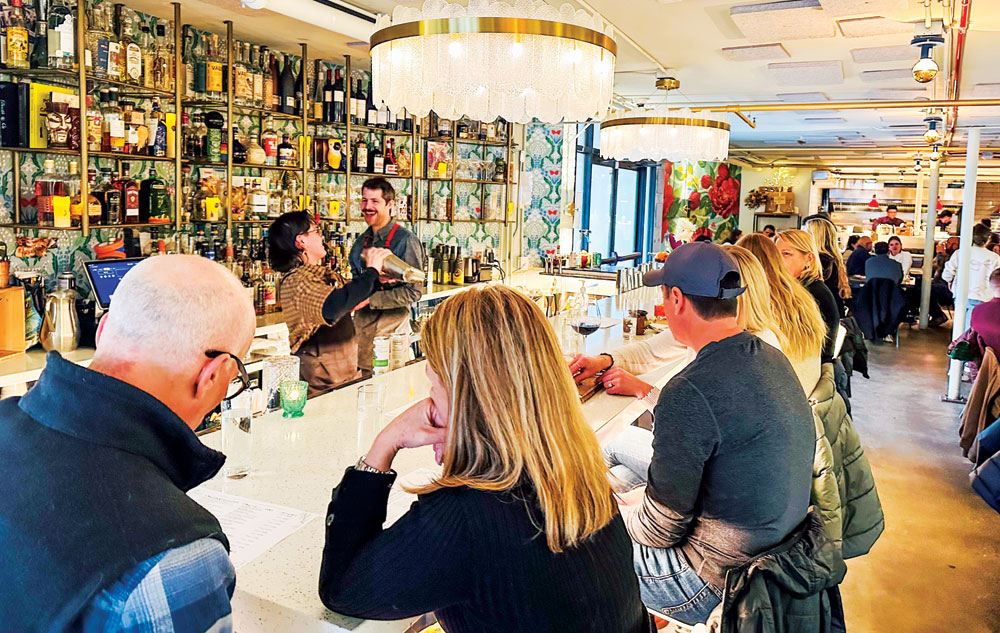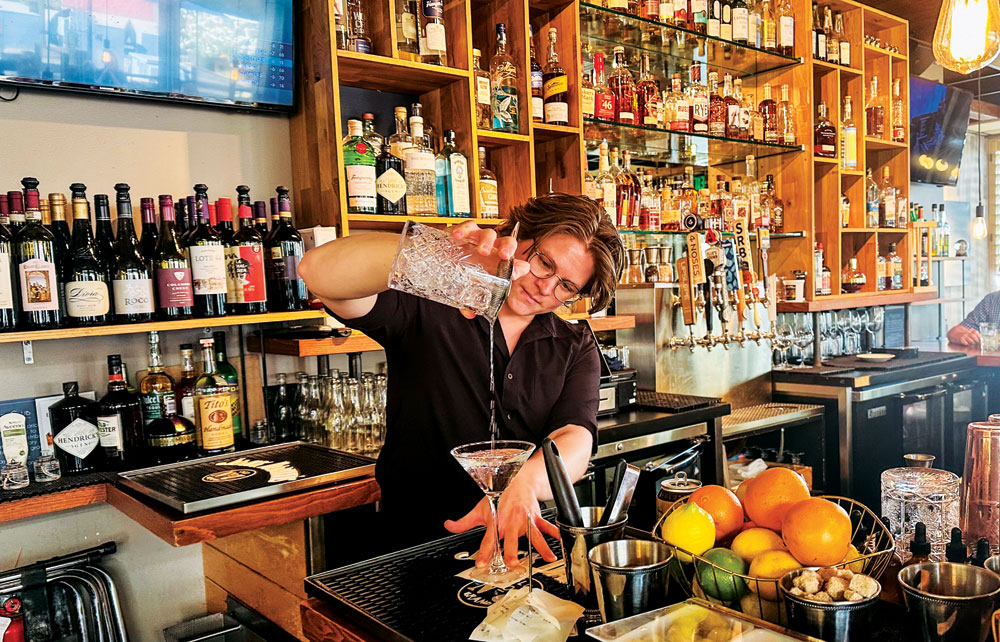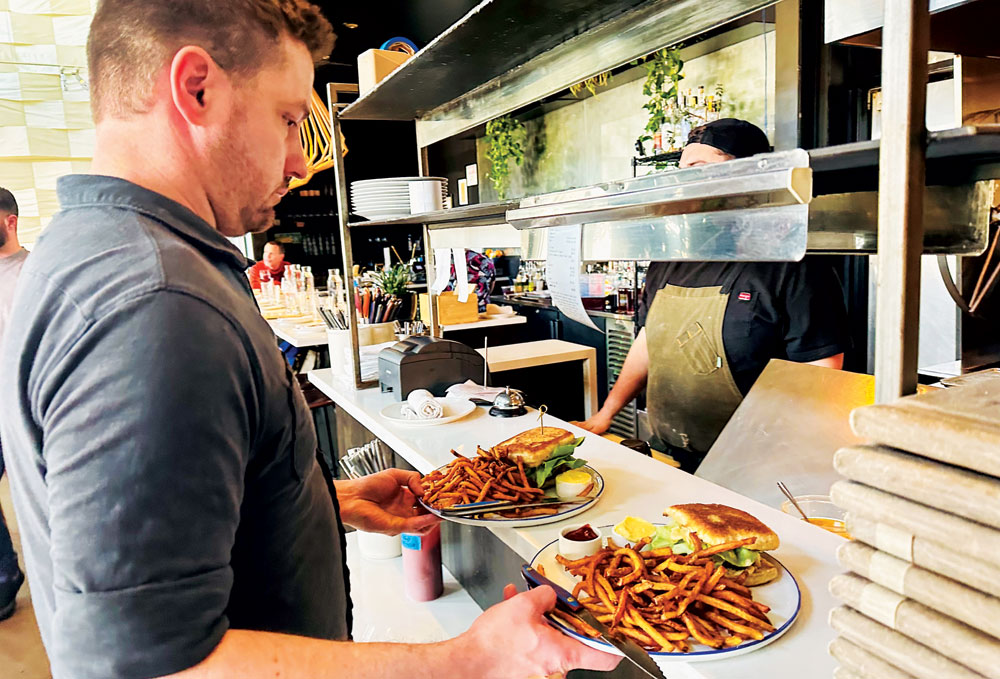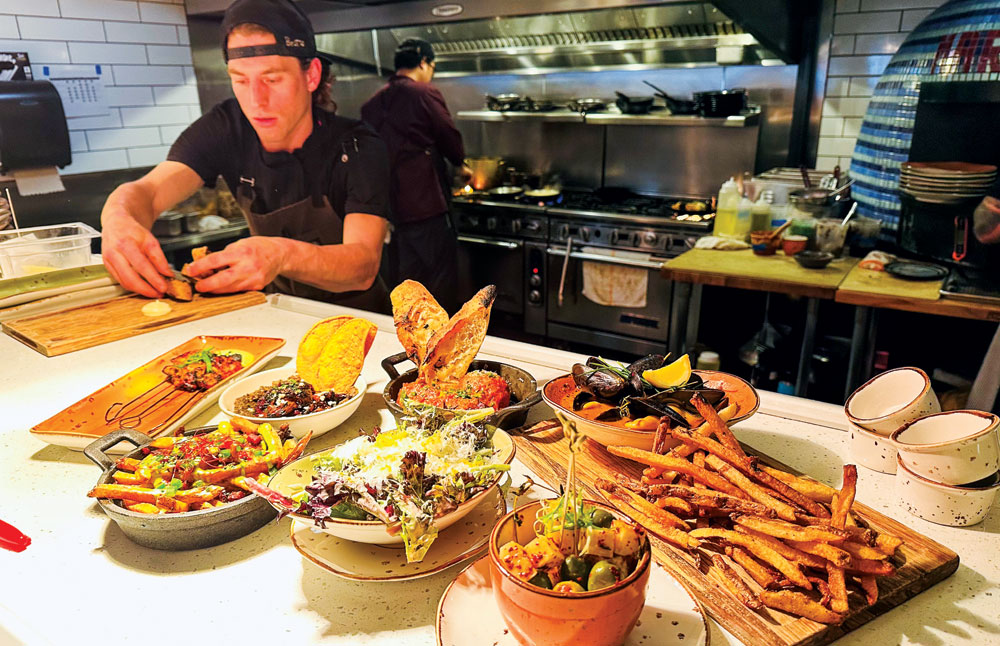
Happy hour attendees sit at the bar at Lucina Eatery & Bar early on a Friday evening to unwind, have a drink, and eat some tapas.
When the economy is struggling, restaurants do, too. One tactic to help them survive and thrive is to offer happy hour programs that benefit the bottom line while giving diners more reasons to walk in the door.
Dining out is one of the first things people cut when money’s tight. However, reduced prices on happy hour food and drink make it more doable.
In interviews, local restaurant owners made several points about how happy hours help their bottom line.

In Lowry, Officers Club bartender Josh Owen serves up a cocktail for a happy hour patron.
For restaurants, the decreased profit margin is balanced against the benefits.
“Every restaurant has a much higher margin on beverages than on food,” says Joe Vostrejs, owner of Officers Club in Lowry. “If we’re willing to take a little less margin on beverages, but maintain the same kind of margin on food, while still giving good value to the guest, that’s ideal. It’s better for a restaurant to be full and operating at a slightly lower margin than to be empty and operating at a zero margin.”
A restaurant abuzz with people sets a positive, energetic tone for diners.
“If you don’t have a happy hour at all and your first dinner guest walks in at 6pm and it’s like a tomb in there, you don’t want that,” says Vostrejs. “I want you to walk in and be like ‘Wow, what’s going on in here? This looks like fun!’”

A popular happy hour offering at Annette is the Wagyu beef burger served on a house made English muffin for $20.
Having diners in a restaurant early is good for the staff.
Caroline Glover, co-owner of Annette in the Stanley Marketplace, explains “It’s a really big morale boost for my servers and cooks because it means we’re going to take care of lots of people and that’s what we’re here to do.”
Happy hour means staff have more opportunity to make money throughout the evening.
“Plus, it’s a great time to have people experience the restaurant at a lower price point than they might otherwise,” says Vostrejs.
Glover agrees. “I want people to feel like they can still go out and not break the bank, especially since our prices are going up on our end. Everybody’s prices are going up, everywhere.”

Lucina’s happy hour menu includes several tapas dishes to share.
Restaurants hope that happy hour leads to staying for dinner or returning another time.
“It’s a gateway into our normal dinner service,” says Erasmo Casiano, chef owner of Lucina Eatery & Bar in Park Hill. “If we’re able to get them to come back for dinner, then we’ve already won.”
Lucina’s happy hour was successful during patio season last year. But with cooler weather, it dwindled to the point where Casiano felt it didn’t make financial sense to offer it anymore. Then he noticed that the bulk of their dinner traffic was concentrated in about two hours mid-evening.
With warm weather returning, happy hour has been reintroduced and has proven to be popular, especially among parents dropping their kids off for after school activities in the neighborhood.
Happy hour can be a more relaxed way to eat out.
“The whole idea of happy hour is it’s convivial and fun,” says Vostrejs. “You connect with people sitting near you, have an affordable bite to eat and drink, and have a social time.”
Happy hour is having a positive impact for these restaurants.
“The guests like knowing it’s there,” says Vostrejs.
“We aren’t immune to the world happenings,” says Casiano. “It’s an extra lifeline for us.”
“We’ve seen an uptick in business because of happy hour and we’re going to have to see that continue in order to survive,” says Glover. “Every dollar counts right now.”
The success of happy hour tells Glover that people still want to eat out. “They just have to do it in a way that’s more careful than it used to be.”
Front Porch photos by Christie Gosch




0 Comments